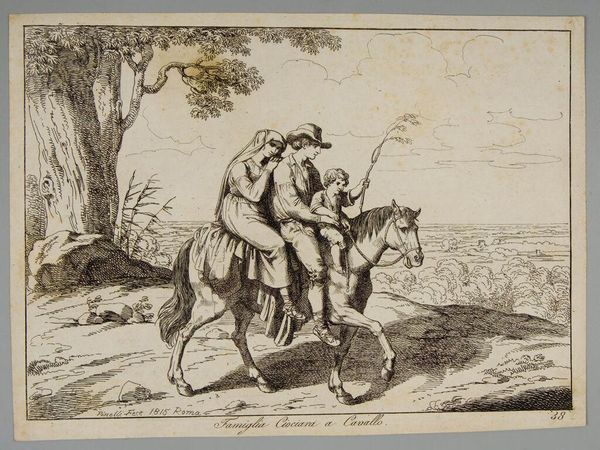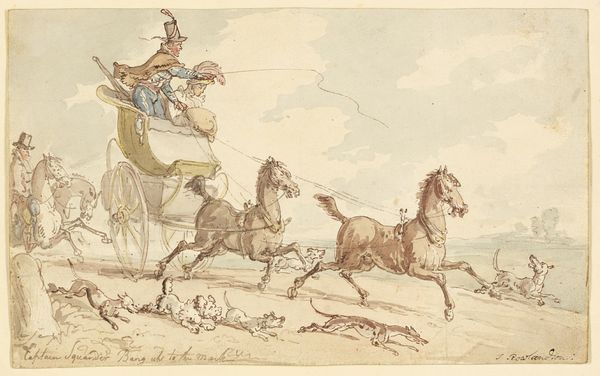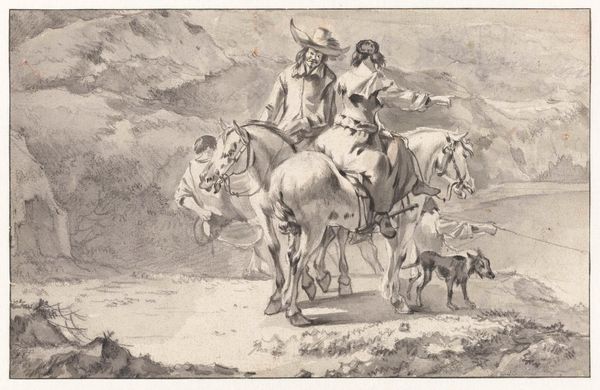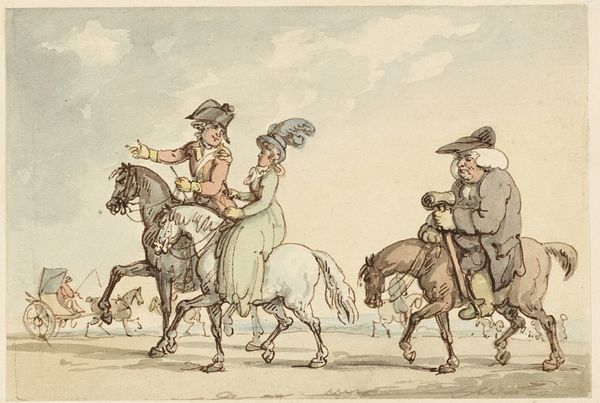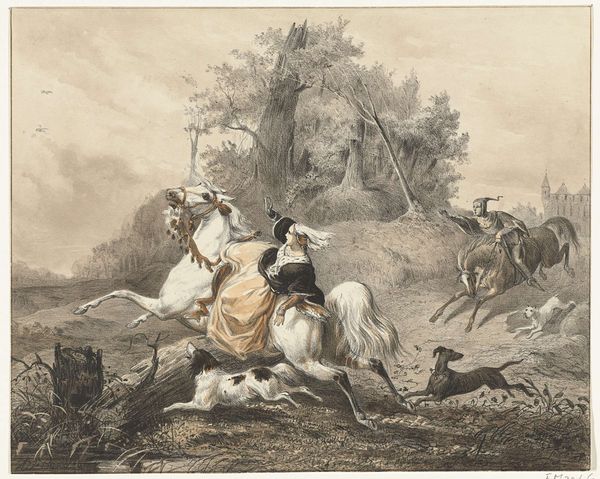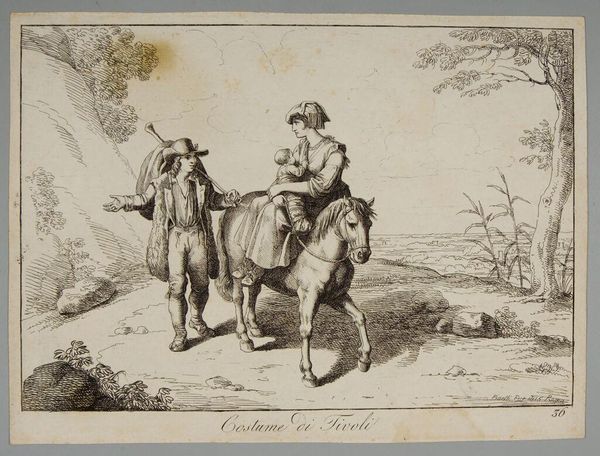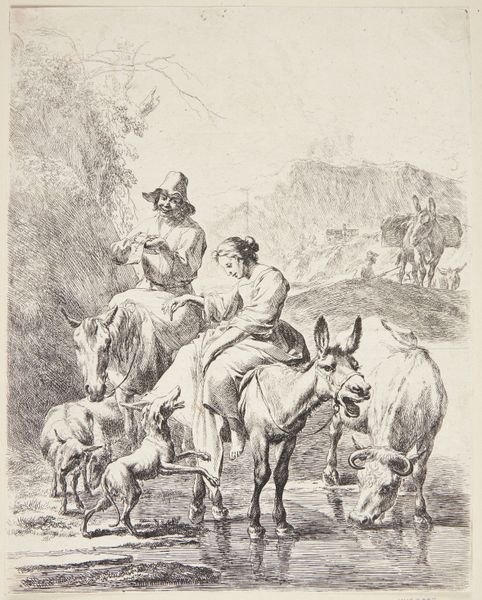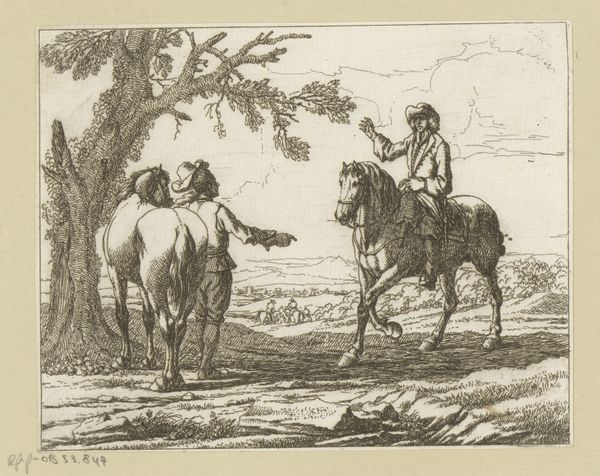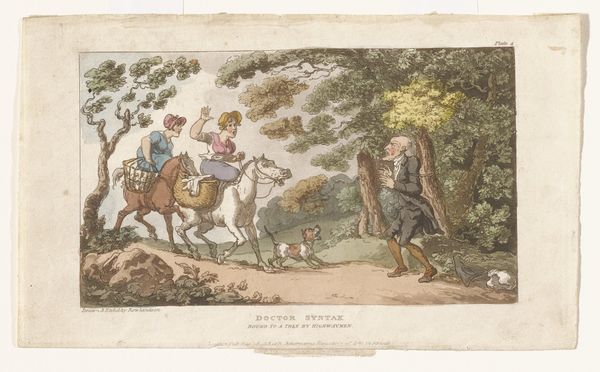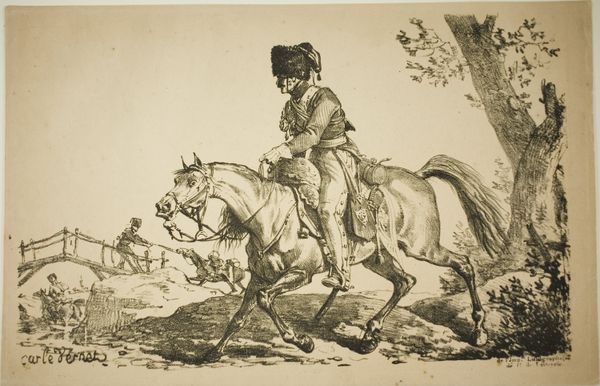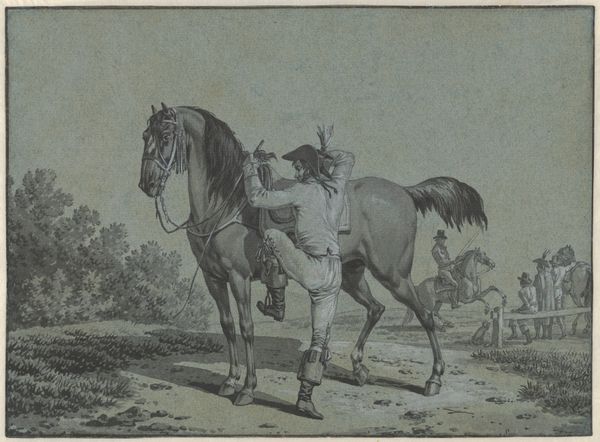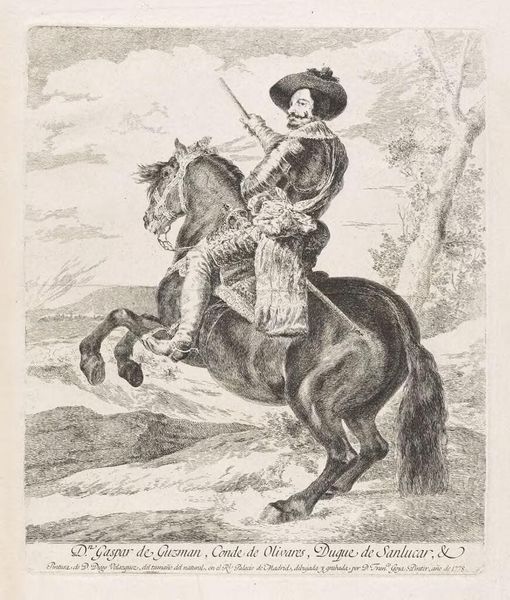
painting, watercolor
#
portrait
#
narrative-art
#
ink painting
#
painting
#
landscape
#
watercolor
#
romanticism
#
costume
#
watercolour illustration
#
genre-painting
#
italian-renaissance
#
italy
#
watercolor
Dimensions: 22.5 x 30.5 cm
Copyright: Public domain
Curator: Today we’re looking at "Family of Ciociari on the road," a watercolor and ink drawing by Bartolomeo Pinelli, created around 1818. Editor: It's melancholic, even stark. The muted tones, especially the grays and blues, give it this feeling, though there is something comforting about its domesticity and portraiture. It is beautiful, with such a gentle hand, but also gives the impression of hardship and austerity. Curator: Pinelli was fascinated by the lives of the Roman peasantry, and the Ciociari, known for their traditional costumes, were a frequent subject. This piece offers a glimpse into their everyday existence. These images played into contemporary society by often turning lived experiences into genre art. Editor: That's evident in the detail given to their clothing—the fabrics and construction tell a story of skilled handcraft, reflecting their labour. And the presence of a horse, an animal used for heavy burden-carrying work, indicates a degree of hardship that the figures bear. Curator: Absolutely. Pinelli’s work often romanticized the "common man," but there's an undercurrent of social commentary here as well, documenting their struggles, particularly within a city experiencing industrialization. Notice how the distant landscape provides some social context of the time. Editor: And it seems essential to me how these works and figures were viewed and consumed by city elites. This image would certainly be presented in parlours for city patrons and wealthy members of Roman society, or for those from outside of Italy, interested in taking away images of working class Italian subjects. The materiality of the art—the paper and ink—becomes another layer to discuss its historical consumption. It speaks to an appropriation. Curator: Precisely. The narrative woven here tells of a journey, but also speaks to broader socio-political currents affecting rural communities, or the image thereof in artistic portrayals. Editor: Indeed. Considering the art supplies—the pigments and paper available at that time—also adds a tangible element to our understanding. How artistic license reflects a particular time and also its economic possibilities. Curator: Looking at it this way really opens up a view to appreciate it. Thanks for the input! Editor: My pleasure. Hopefully, this discussion invites listeners to view and analyse it with some insight of their own.
Comments
No comments
Be the first to comment and join the conversation on the ultimate creative platform.
